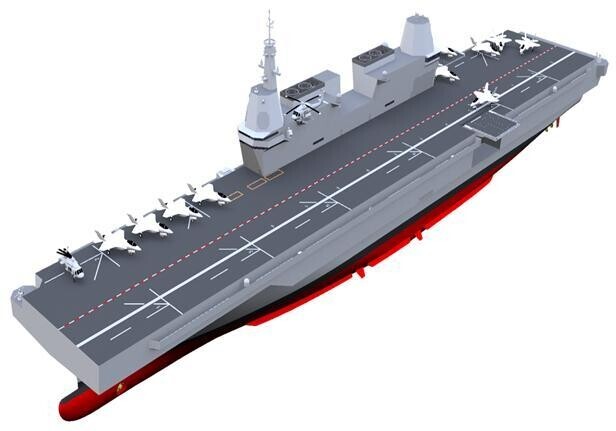hankyoreh
Links to other country sites 다른 나라 사이트 링크
S. Korea to develop defense system against N. Korea’s long-range artillery by 2030

A “Korean Iron Dome” system designed to shield Seoul against North Korea’s long-range artillery is to be built around 2030. An exclusive global positional system (GPS) for the South Korean military is also being pursued to be established by the early to mid-2030s.
On Aug. 10, the South Korean Ministry of National Defense (MND) released its “Intermediate-Term National Defense Plan, 2021-2025,” which includes plans for military power development and management over the next five years. According to the MND’s announcement, authorities plan to begin development in the next five years on the “Korean Iron Dome,” an interception system capable of defending the Seoul Capital Area (SCA) and key facilities from the threat of North Korea’s long-range artillery.
The category of long-range artillery, which includes North Korean multiple-launch rocket systems and 170mm self-propelled artillery, drew attention as a key form of conventional firepower at the time of North Korea’s threats to turn Seoul into a “sea of fire.” While the military has worked to establish a Korean Air and Missile Defense (KAMD) system, it is designed to intercept ballistic missiles such as the Scud and is ineffective against long-range artillery.
In a recent report, the US-based Rand Corporation predicted that a surprise attack by North Korea using conventional artillery alone could result in over 130,000 casualties in Seoul within one hour. An MND official explained, “The long-range artillery interception system could be force-integrated by the late 2020s to early 2030s.”
Another project involves the establishment of an independent South Korean GPS that can be used in conjunction with US GPS, with a target date of force integration by the early to mid-2030s. The South Korean military is expected to gain expanded independent tactical capability once it has its own GPS. An additional plan involves launching an ultra-small reconnaissance satellite capable of detecting terrestrial objects at sizes as small as 1m high by the mid-2020s through the use of solid fuel launch vehicles, which recently became possible through an amendment of South Korea-US missile guidelines.

Military to begin development of light aircraft carrier next year
A project to develop a light 30,000-ton aircraft carrier is also set to begin in earnest next year. In addition to its role in transporting troops, equipment, and material, the light aircraft carrier will also be capable of serving as a task force command vessel through the operation of vertical takeoff and landing (VTOL) aircraft. Plans also include the construction of 3,600-ton and 4,000-ton armed submarines with underwater navigation capabilities after the force integration of 3,000-ton submarines has been completed.
The MND further plans to increase monthly pay for soldiers from its current 541,000 won (US$457, sergeant level) to 676,000 won (US$571, or 50% of the 2017 minimum wage) by 2022, with an additional increase to 963,000 won (US$813, or 50% of a staff sergeant’s first pay grade) by 2025. In the three years since the Moon Jae-in administration took office in 2017, the monthly pay for a sergeant has risen by over 150% from 216,000 won (US$182) to 541,000 won (US$457).
By Park Byong-su, senior staff writer
Please direct comments or questions to [english@hani.co.kr]
Editorial・opinion
![[Column] Park Geun-hye déjà vu in Yoon Suk-yeol [Column] Park Geun-hye déjà vu in Yoon Suk-yeol](https://flexible.img.hani.co.kr/flexible/normal/500/300/imgdb/original/2024/0424/651713945113788.jpg) [Column] Park Geun-hye déjà vu in Yoon Suk-yeol
[Column] Park Geun-hye déjà vu in Yoon Suk-yeol![[Editorial] New weight of N. Korea’s nuclear threats makes dialogue all the more urgent [Editorial] New weight of N. Korea’s nuclear threats makes dialogue all the more urgent](https://flexible.img.hani.co.kr/flexible/normal/500/300/imgdb/original/2024/0424/7317139454662664.jpg) [Editorial] New weight of N. Korea’s nuclear threats makes dialogue all the more urgent
[Editorial] New weight of N. Korea’s nuclear threats makes dialogue all the more urgent- [Guest essay] The real reason Korea’s new right wants to dub Rhee a founding father
- [Column] ‘Choson’: Is it time we start referring to N. Korea in its own terms?
- [Editorial] Japan’s rewriting of history with Korea has gone too far
- [Column] The president’s questionable capacity for dialogue
- [Column] Are chaebol firms just pizza pies for families to divvy up as they please?
- [Column] Has Korea, too, crossed the Rubicon on China?
- [Correspondent’s column] In Japan’s alliance with US, echoes of its past alliances with UK
- [Editorial] Does Yoon think the Korean public is wrong?
Most viewed articles
- 1‘We must say no’: Seoul defense chief on Korean, USFK involvement in hypothetical Taiwan crisis
- 2N. Korean delegation’s trip to Iran shows how Pyongyang is leveraging ties with Moscow
- 3‘Weddingflation’ breaks the bank for Korean couples-to-be
- 4Will NewJeans end up collateral damage in internal feud at K-pop juggernaut Hybe?
- 546% of cases of violence against women in Korea perpetrated by intimate partner, study finds
- 6[Column] Park Geun-hye déjà vu in Yoon Suk-yeol
- 7“Parental care contracts” increasingly common in South Korea
- 8[Column] Yoon’s first 100 days should open our eyes to pitfalls of presidential system
- 9[Interview] Dear Korean men, It’s OK to admit you’re not always strong
- 10[Editorial] New weight of N. Korea’s nuclear threats makes dialogue all the more urgent